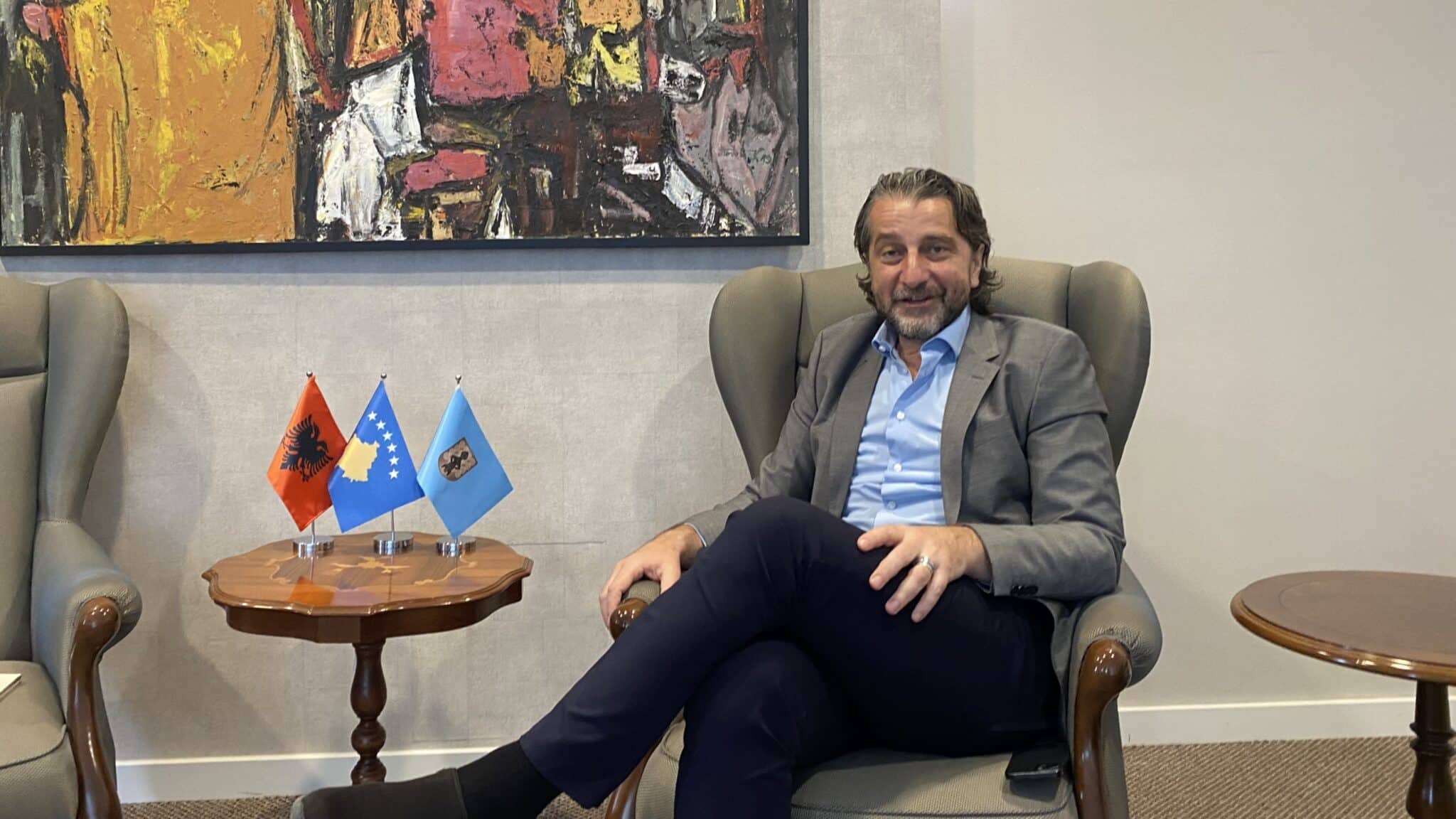Mayor says new museum will strike a different note – by accenting the Kosovo people’s efforts to achieve peace and freedom rather than focusing solely on wartime atrocities.
With a Genocide Museum already proposed for Prishtina and war-related exhibitions being held by BIRN Kosovo’s Reporting House initiative and former President Atifete Jahjaga’s foundation, the Kosovo capital looks set to host yet another venue focused on the 1998-99 war.
This summer, the Municipality of Prishtina plans to open a Peace Museum, both to commemorate the atrocities of the Kosovo war but also to highlight efforts made to build peace more than two-and-a-half decades after the war ended.
The new museum will be part of the soon-to-be-established Centre for Peace and Advocacy Studies, which aims to promote peacebuilding and conflict resolution.
“It will focus on resolving tensions and conflicts, promoting post-conflict stability and enhancing peacebuilding capacity,” Prishtina Mayor Perparim Rama told BIRN.
The Centre for Peace and Advocacy Studies, due to open in August, will focus on a range of research fields, including diplomacy, mediation and other peacebuilding efforts, with the museum forming an integral part of its mission.
The initiative is being supported by Jim Xhema, an Albanian-American businessman and long-time lobbyist for Kosovo’s independence. He has pledged to finance the research and study centre in Prishtina for at least 25 years.
Ties to US neglected

Perparim Rama, mayor of Prishtina. Photo: BIRN.
“This centre will serve not only to advance research and analysis and train new peace researchers but also to reactivate Albanian lobbying efforts in the United States,” Rama said.
He added that since Kosovo’s independence from Serbia, declared in 2008, little effort has been made to sustain strong ties with the US. “Meanwhile, for more than two decades, the Serbian lobby has invested heavily in working against Kosovo’s independence,” he said. “Lobbying should be a continuous process, not just something we turn to in times of need or crisis.”
The museum will document the struggle of the people of Kosovo for freedom and peace.
According to the initial concept, the museum will cover the period from the post-World War II years, including the fight for autonomy, the 1981 demonstrations, the abolition of Kosovo’s autonomy by Slobodan Milosevic, the peaceful resistance movement and the armed conflict led by the Kosovo Liberation Army, KLA.
“It will be a reflection of the collective memory of the 20th century, but also of the broader region,” Rama said. “It will encompass the entire journey our people have gone through and the efforts made to achieve freedom and peace in this troubled region.”
In 2018, the Municipality of Prishtina announced plans to open its own war crimes museum in a disused Communist-era bunker, to display exhibits about the atrocities committed during the 1998-99 conflict. The initiative was never formalised.
“Names are crucial for the message they convey, especially in terms of influencing people’s consciousness and subconsciousness and also in attracting tourists,” Mayor Rama explained.
More than 12,000 Albanians are estimated to have been killed and almost a million driven from their homes in Kosovo during the 1998-99 war, when Serbian forces waged a brutal campaign to crush a guerrilla insurgency that had eclipsed a decade of passive resistance against Serbian repression in the then province.
Earlier this year, the Kosovo Ministry of Culture announced the establishment of a Genocide Museum – raising eyebrows about the implications of such a name.
“If we call it a genocide museum, it ‘by default’ sets a less inclusive and less unifying tone,” Rama said. “It’s time for a new mindset, one that considers what we are cultivating today through the names and spaces we assign to the foundations of our future.”
Rama pointed to the need to adopt modern standards for museum classification and to use a controlled vocabulary when curating historical collections.
“I believe the Peace Museum can encompass it all,” he says. “We can present the war crimes and atrocities within this space but also create room to tell the stories of the efforts made to achieve lasting peace, not only by us, but by others as well,” he said.
He said that mechanisms must be established to safeguard peace, and that the prevailing mindset of institutions focusing solely on war in the Balkans needs to change.
“We need to shift the focus back to peace. How to maintain it and how to foster long-term peace in a region that has long been troubled by ethnic hostilities and war,” Rama said.
The mayor says the Peace Museum will take a different approach and with a positive connotation, where victims are an integral element of the peace process.
“In this picture, victims, especially women, constitute a main pillar of the contribution to freedom and peace. They will not be presented simply as victims without any space in the collective memory,” he said.
Rama also said he plans a memorial park as a dignified place for the fallen and their commemoration on a single day, rather than through numerous ceremonies spread out over the year. “A collective mindset must be created for this,” he said.





